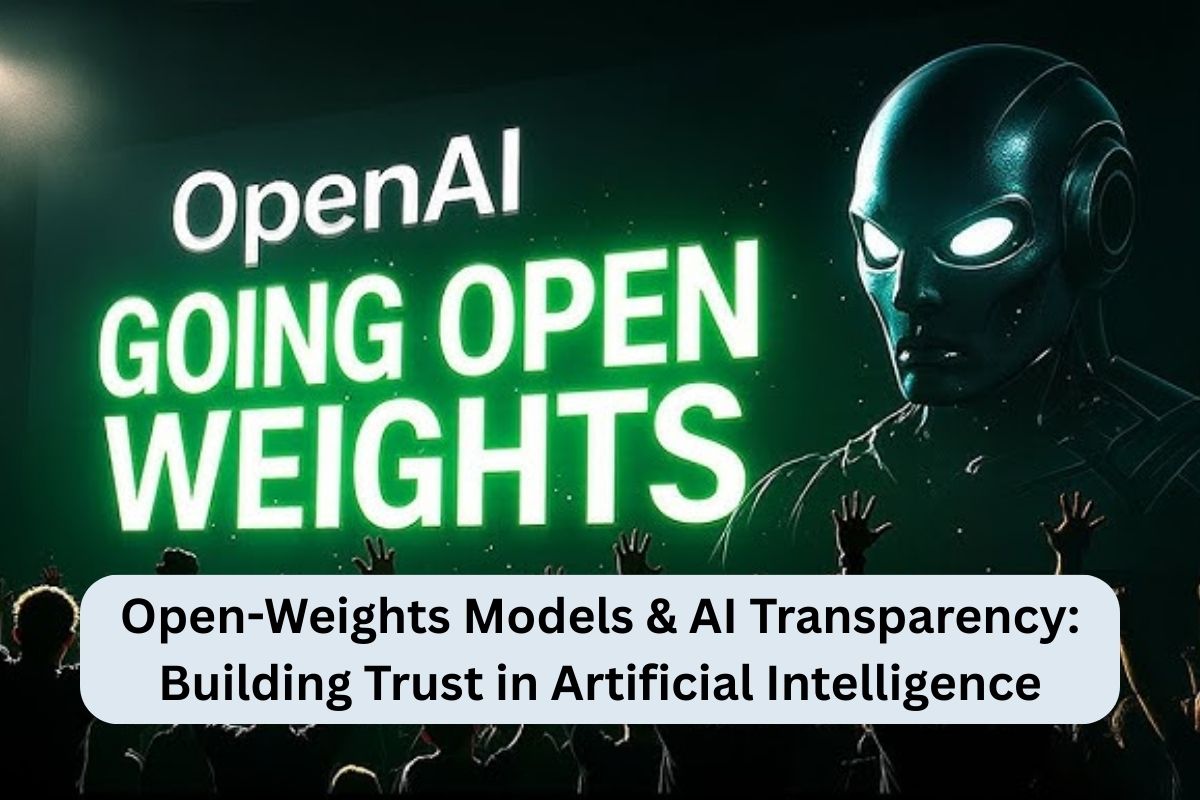Artificial Intelligence (AI) is transforming industries, but with its growth comes a big challenge: trust. Many AI models operate like “black boxes,” making decisions without users knowing how or why. This lack of visibility raises concerns about bias, fairness, and accountability. Enter open-weights models—a step toward greater AI transparency. By allowing researchers, developers, and the public to see and test how these models work, open-weights models can help ensure AI remains ethical, fair, and trustworthy.
What Are Open-Weights Models?
Open-weights models are AI systems where the model’s parameters, or “weights,” are made publicly accessible. Unlike closed systems, where only the creators can see and use the model, open-weights AI allows developers and researchers worldwide to inspect, fine-tune, and improve it. This approach promotes collaboration, encourages innovation, and ensures AI systems can be held accountable.
Why AI Transparency Matters
AI transparency is about making AI systems understandable and explainable. Without transparency, it’s nearly impossible to detect biases, identify risks, or ensure fairness. Open-weights models give experts the ability to audit and test AI, making sure decisions are based on logic and not hidden errors. This builds confidence among users, regulators, and businesses adopting AI solutions.
Open-Weights vs Closed AI Models
| Feature | Open-Weights Models | Closed AI Models |
|---|---|---|
| Accessibility | Publicly available for inspection & use | Restricted, controlled by developers |
| Transparency | High—weights and methods are visible | Low—operates like a black box |
| Collaboration | Encourages community-driven improvements | Limited to internal teams |
| Innovation | Faster due to open contributions | Slower, dependent on one organization |
| Trust | Builds trust through openness | May face skepticism or regulatory issues |
Benefits of Open-Weights Models
Open-weights AI helps democratize technology. It reduces reliance on big corporations, giving startups and researchers equal opportunities to innovate. Transparency also makes it easier to identify and fix harmful biases, ensuring AI systems are fair and inclusive. For businesses, using open-weights models can build customer trust and align with growing demands for ethical AI practices.
Challenges and Concerns
Despite the benefits, open-weights models raise concerns too. Making weights public could allow misuse, such as generating harmful or misleading content. Security and misuse prevention remain critical challenges. Additionally, businesses may worry about losing competitive advantage if they share too much of their proprietary technology.
The Future of AI Transparency
The demand for transparent and ethical AI is only growing. Governments and regulators are already discussing frameworks to ensure accountability. Open-weights models may become the foundation for trustworthy AI, encouraging collaboration while protecting against risks. Balancing openness with security will be the key to shaping AI’s role in society.
Open-weights models are not just a technical innovation—they represent a cultural shift in AI development. By making systems more transparent and collaborative, they help build trust, ensure fairness, and accelerate progress. As AI becomes part of everyday life, embracing transparency through open-weights models may be the most important step toward a responsible future.
FAQs on Open-Weights Models & AI Transparency
1. What does “open-weights” mean in AI?
Open-weights means the internal parameters of an AI model are publicly available, allowing inspection and modification by anyone.
2. How do open-weights models improve AI transparency?
They allow researchers to examine how models make decisions, helping detect bias, errors, or unfair practices.
3. Are open-weights models the same as open-source AI?
Not exactly. Open-source AI includes code and training data, while open-weights specifically refers to making model parameters accessible.
4. What are the risks of open-weights models?
Risks include misuse for harmful purposes, such as generating disinformation, and potential loss of competitive advantage for companies.
5. Will open-weights models become the standard in AI?
Possibly. As demand for ethical and transparent AI grows, open-weights models could play a central role in shaping responsible AI practices.
